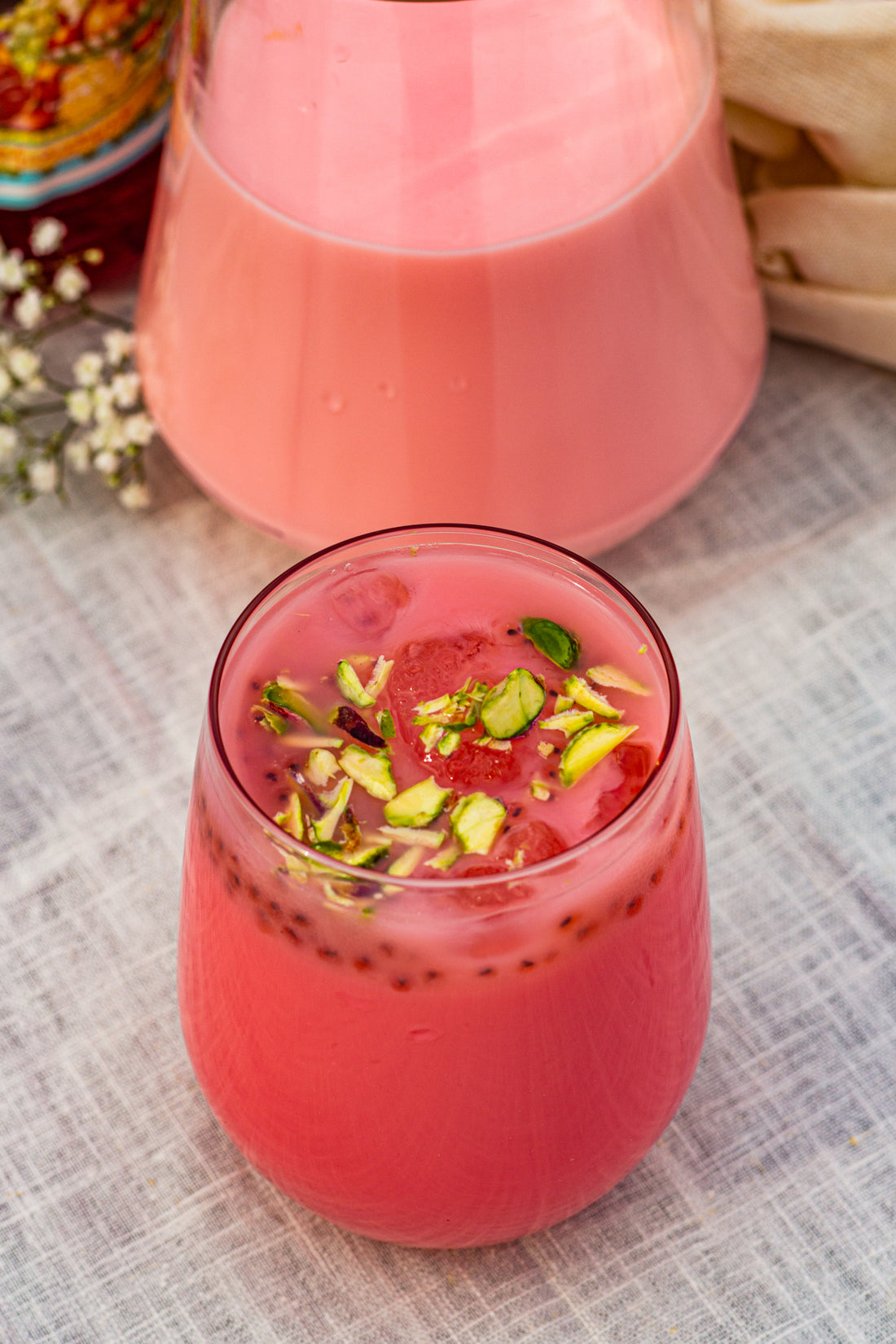
Rooh Afza in Ramadan
Share
There is a fascinating connection between rose milk and Ramadan to the point where eventhe smell of this refreshing drink instantly brings back the memories of childhood Iftaars.
Rose Milk is a cooling drink made by combining 2 tbsp of concentrated rose syrup with 350ml of cold milk which is stirred or shaken before being served. It is a simple pleasure which is enjoyed by millions during the month of Ramadan. The most popular brand associated with rose milk is Rooh Afza; a household name for many, particularly in the South Asian community.
Rooh Afza, while often used to refer to its rose milk form, can actually be translated to ‘refresher of the soul’. It is a brand which formed over a century ago in New Delhi, aiming to create a selection of herbal and floral syrups that could be combined with cold water or milk to combat the incredibly hot summers. The company did just that and Rooh Afza is now a brand synonymous with the Summer months.
The origins of this drink date back to the Persian empire, where they would drink Sharbat, a mix of floral syrups and water to help quench their thirst in the heat, and during times of celebration. This tradition continued in the Islamic empires where Sharbat was heavily featured in stories of the Islamic court.The first sight of it within the Indian subcontinent came with the Mughal empire. It is reported that the first Mughal ruler Babur, called for syrups to be mixed with ice from the Himalayas and served as refreshing drinks. As a result of the Persian and Mughal influence, this range of floral and herbal distilled drinks can be found across the Middle East, South Eastern Europe, and Asia.
These days, Members of any mosque frequented by members of the South Asian community ensure that cups are brimmed with Rooh Afza rose syrup that has been poured into chilled cartons of milk and shaken well. Regardless of age or ethnicity, hundreds of thirsty guests that are observing Ramadan will fill the cups of their neighbours and themselves to quench their thirst and reawaken their appetite before the Maghrib prayer.
This article was a featured page in the Dates and Water Cookbook, a book which I wrote in collaboration with my good friends Saeed, Ossie and many other creative talents.
